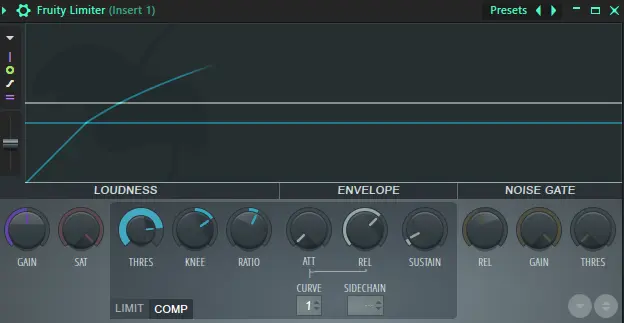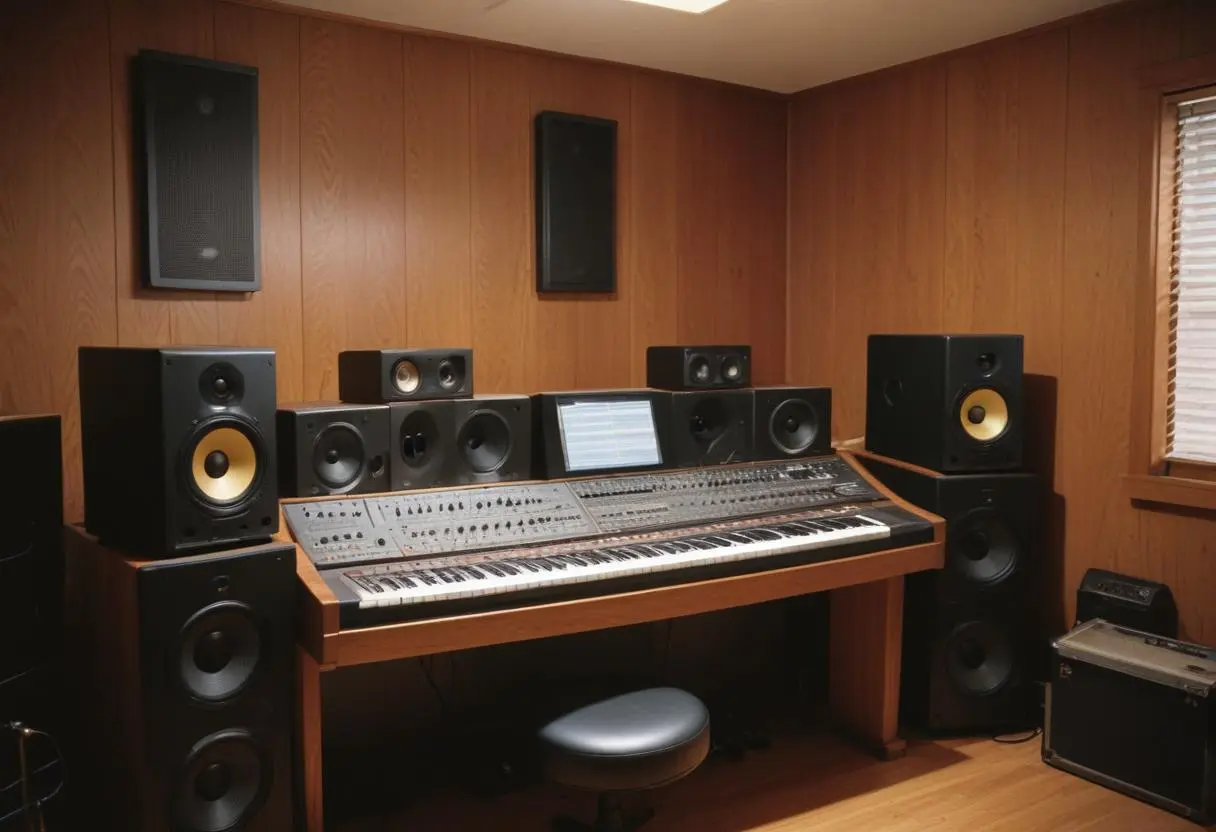
Table of Contents
Difference Between Home Studio and Professional Studio
Discover the fundamental distinctions between home and professional audio production facilities. Learn about each type of studio’s equipment, technology, and expenses, as well as the benefits and drawbacks. Whether you’re a hobbyist or a professional, this guide will help you select the best configuration for your requirements.
Introduction to Home and Professional Studios
When starting out in audio production, it’s important to grasp the fundamental distinctions between home studios and professional facilities. A home studio is often defined as a customized recording setup that may be constructed in any household area. It frequently contains basic equipment including a computer, audio interface, microphone, headphones, and digital audio workstation (DAW) software. A home studio’s goal is to make amateur recording, podcasting, and even early stages of music production more accessible without requiring a large investment.
In contrast, a professional studio is a more complex facility geared for high-quality audio production. These studios are outfitted with cutting-edge equipment, such as high-end microphones, mixing consoles, outboard gear, and acoustically treated rooms, to assure the best sound quality. Professional studios are designed specifically for large-scale music production, film scoring, voice-over work, and other commercial audio projects.
The uses for each type of studio vary greatly. Home studios are frequently used by independent artists, podcasters, and content creators that want flexibility and control over their recording process. They provide a low-cost alternative for people who do not require the complex features of a professional studio. Professional studios, on the other hand, cater to artists, producers, and engineers that want high-quality sound as well as access to specialized equipment and experience.
One of the most noticeable distinctions between home and professional studios is the cost of setting up and maintaining them. A home studio may be built on a limited expense, making it accessible to a wide range of users. Professional studios, on the other hand, require a significant financial commitment, not only in terms of equipment, but also in the design and maintenance of acoustically optimal buildings. This expenditure is justified by the improved audio quality and expert support that these studios provide.
Equipment and Technology: The Core Differences
When comparing home studios to professional studios, the significant contrasts in equipment and technology are instantly noticeable. Professional studios are often supplied with high-end microphones that catch the most subtle aspects of sound, providing an unrivaled degree of clarity and precision. These studios frequently use condenser microphones with high sensitivity, whereas home studios may rely on more affordable choices like as dynamic mics, which, although useful, may not provide the same degree of detail.
Professional audio interfaces are equally sophisticated, with additional channels, improved preamps, and high-resolution A/D converters. These components guarantee that the recorded audio matches the actual performance as closely as feasible. In contrast, home studios frequently employ simpler interfaces with fewer channels and less complex preamps, limiting recording quality and versatility.

Monitors, or studio speakers, also change greatly between the two settings. Professional studios invest in high-fidelity monitors that accurately depict the audio, enabling precise mixing and mastering. Home studios, on the other hand, may employ less expensive monitors or even high-quality headphones, which might produce bias in the sound due to their varying frequency response.
When it comes to software, both home and professional studios use digital audio workstations (DAWs) for recording, editing, and mixing. Professional studios, on the other hand, frequently have access to a bigger choice of DAWs, high-end plugins, and specialist software tools, allowing them to manipulate audio in a more diverse manner. Home studios may employ less costly or even free DAWs and plugins, which, although functional, may not provide the same level of detail or sound quality.
Acoustics and soundproofing are another important point of differentiation. Professional studios are meticulously constructed for acoustics, using modern soundproofing techniques and acoustic treatments to provide an ideal recording atmosphere. This involves using bass traps, diffusers, and absorbers to reduce sound reflections and resonances. Due to economic and space constraints, home studios sometimes have to make do with minimal acoustic remedies.
Advantages and Limitations of Home Studios
Home studios provide several benefits to musicians and producers, most notably flexibility and ease. One of the most major advantages is the flexibility to work at any time. Unlike professional studios, which work during regular hours, a home studio allows inspiration to strike at any time, resulting in a more natural and spontaneous recording process. Furthermore, the familiarity of a familiar location may boost productivity and minimize stress, resulting in more genuine and emotional performances.
However, while the advantages are significant, home studios have their own set of constraints. One significant problem is the potential reduction in sound quality. Most home setups lack the complex acoustic treatments and high-end equipment seen in professional studios. This difference can occasionally result in recordings that lack the gloss and precision of those made in a professional studio.
Soundproofing is another key challenge in a household context. Maintaining a place free of external noise and internal reflections may be both technically difficult and expensive. Many home studio users struggle with domestic disturbances, such as traffic or neighbors, which may disrupt recordings and reduce overall sound quality.
Space and economic limits are also important considerations for home studios. Often, the available space in a home studio is restricted, limiting the types and quantities of equipment that may be employed. This may have an influence on the ability to record many instruments at the same time or build up more sophisticated recording arrangements. Budget constraints compound these challenges since high-quality recording equipment and acoustic remedies can be prohibitively expensive.
Despite these limitations, many excellent recordings have come from home studios. For example, Billie Eilish’s debut album, which received many Grammy Awards, was recorded in her home studio. Other home studio users commonly express delight with having total creative control over their work, despite the inherent constraints.
The Professional Studio Experience: Benefits and Drawbacks
Working in a professional studio provides a number of advantages that can greatly improve the music production process. One of the key benefits is the improved sound quality gained by cutting-edge acoustic treatment and high-end recording equipment. Professional studios are designed to reduce noise and create an ideal setting for recording high-quality audio. This degree of sound quality is frequently impossible in a home studio environment, regardless of the equipment employed.
Another big benefit is having access to a diverse range of high-end equipment. Professional studios are often equipped with a wide range of microphones, preamps, compressors, and other recording equipment to meet a variety of demands. This vast range enables artists and producers to experiment with various sounds and get the exact tone they seek. Furthermore, the experience of professional people, such as engineers and manufacturers, may significantly improve the quality of the final product. These pros have many years of expertise and can provide significant insights and help during the recording process.

Despite these benefits, there are also disadvantages to consider when working in a professional studio. One of the most noticeable is the price. Booking time at a professional studio may be costly, and these expenses can accumulate rapidly, especially for independent artists or those on a tight budget. Another possible disadvantage is the pressure of working within planned sessions. Unlike home studios, which allow artists to work at their own speed, professional studios sometimes demand scheduling specified time periods, which can generate a sense of urgency and potentially influence the creative process.
However, the collaborative setting of professional studios may be quite useful. Collaboration with other competent experts can result in more inventive ideas and higher-quality outputs. Many artists and producers have attested to the wonderful effects of this collaborative environment. For example, acclaimed producer John Doe noted, “The energy and expertise in a professional studio can elevate a project in ways that are hard to achieve alone.” Similarly, artist Jane Smith stated: “The creative synergy I experience in a professional studio setting is invaluable.”
In conclusion, while professional studios provide improved sound quality, access to high-end equipment, and expert assistance, they also incur higher expenses and potential schedule conflicts. However, the collaborative atmosphere continues to be a key asset, frequently resulting in higher-quality and more imaginative works.
Check out this blog related to this blog
Check our featured blog
How Do Musicians Make Money?




Leave a Reply